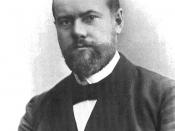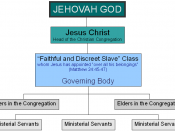Every part of our lives is affected by organisations - we work in them, shop in them, have children in them. Therefore organisations are groups of social entities, to which all groups need some sort of co-operation in order to exist and function. Organisations are characterised by formalised goals, and some sort of deliberate structural system. Thus an organisation can be seen as one or more groups of people working together to achieve a common goal or set of goals.
In order to continue to refine and improve organisational activity within the business context, management must develop an explanation of, how organisations form their structure, function in respect to both their internal and external environment, and survive by the accomplishment of their goals. From such analysis management can evaluate and design an effective organisation.
Effectiveness can be considered in a wide range of terms, for example an organisations profitability, the pursuit of organisation goals or the quality of life for those involved.
The context of which depends on who is using the term.
Organisation design is concerned with planning, constructing and changing an organisations structure to achieve the organisations goals. These plans are shown through the organisation chart which shows the jobs carried out, their level in the hierarchy, and relationships between jobs. In the case of organisation structure, design means affecting the division of labour and the co-ordinating mechanisms, and thereby altering how the organisation functions and how materials, authority and information and the decision process flow through it. There are two theoretical approaches to the structure and design of organisations.
1, Traditional Approaches
Some of which being :-
Max Weber and bureaucracy
This is a form of organisation structure that is characterized by a specialization of labour, a specific authority hierarchy, a formal set of rules, and a...


